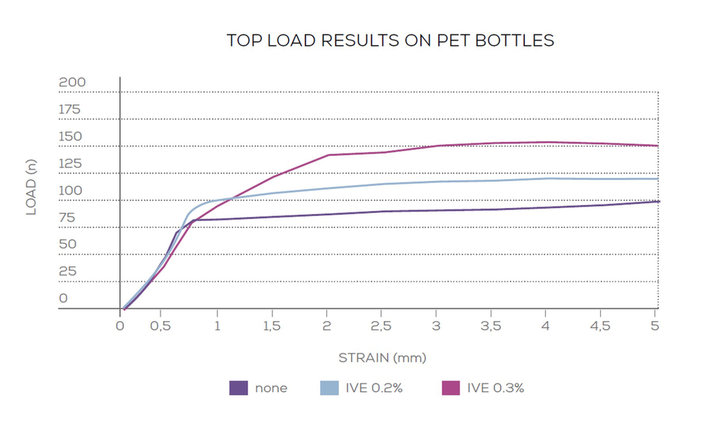COMPANY INSIGHT
Sponsored by REPI
Deliver the circular economy without compromising the carbon impact
That plastics are blamed for polluting is a sad fact, but probably exactly the negative image wrongly addressed to them is what challenges plastics stakeholder to firmly prove the contrary. REPI is among them, being a supplier of colours and additives to the plastic packaging industry for many years, developing customs-made solutions to meet the evolving needs of their converters and Brand Owners.
...and 2020 eventually came. 2020 has been a major deadline for so many projects, pledges, activities at all levels during the last 20 years. A distant destination with plenty of time in-between that was considered more than enough to define long term strategies, action plans and tactics. Goals were ambitious, but time was an ally. Then some goals started to be postponed to 2025, some even to 2030…because as we very good know…time flies and unplanned complexity is often entering the scene.
Coming to hot topics such as sustainability, environment safeguard and social responsibility and looking back at the last 18 months, the feeling is “we understood we are running late” and dramatic escalation of blames against pollution, waste, plastics in the oceans has overwhelmed governments, industry and consumers.
Emotionality gained ground, driven by blogs, news and social media comments worldwide.
In this context, it is crucial to verify if we are really acting in a structured way or if instead the full picture is getting lost.
What is the full picture at all? If we were to choose a concept to describe 2019 this would be “circular economy”. From conferences and events, to marketing claims and governments statements the list of activities with such keyword is almost endless.
REFIT: acting responsibly towards sustainability
Reaching a “circular economy” means structuring economies on the virtuous closed loop of make – use – recycle in which every product is designed to be used and then disposed leaving no traces, it means being re-used to generate other products and so on. This is the mantra.
All good so far but is this really the full picture? I mean if we recall the primary goal of a circular economy, that is to cut CO2 emissions as main cause of global warming, then the Carbon Footprint contribution of our activities should be the main driver. Instead, some solutions emerging and defined as 100% recyclable produce actually higher CO2 emissions than what they are replacing and can’t therefore be sustainable for the future.
Looking at the single use packaging sector, plastic packaging is the most attacked and, as a consequence, we see a shift to other raw materials that are not automatically more Carbon Footprint friendly than plastics. This is often an emotional answer to social media attacks that could be even more harmful from a system point of view. As an example, replacing a PET bottle with a glass one, is not the solution. Glass is defined as 100% recyclable and therefore eco-friendly. A consumer might not realize, however that to produce and recycle that glass bottle a huge quantity of energy will be required (melting process goes to temperatures as high as 1500 °C). On top, logistics costs related to collection, transportation to the recycling site and then all the way back to the market again will have much more negative impact compared with a bottle made of PET.
Once again, instead of pointing the finger at plastic packaging as sole responsible for all ills, what if we try to let consumers learn what’s behind a packaging and why plastics in packaging have become so successful worldwide. Which are the unparallel advantages offered to consumers? First of all a plastic packaging is lighter than any other packaging and therefore consumers can practically carry their on-the-go snacks and drinks while commuting to job; moreover it hardly breaks and its logistic is agile and safe all over the world; lastly plastics are highly recyclable (and recycled already) to enter the packaging value chain again or to be used for a number of other applications, not of lower value (textiles as an example).
Coming now to the Carbon Footprint contribution, plastic packaging helps reduce CO2 emissions, especially when it involves recycling. A recent report of Plastics Europe shows that an increase in the recycling rate of 5mt of plastic packaging would make CO2 emissions falling by 7mt, corresponding to 2,4 million cars less on streets. A PET bottle made of 50% r-PET has a lower environmental impact than a glass bottle (be it single use and reusable) or a tin can. The single use glass bottle is the least environmental unit, even behind aluminium tin which is almost always the runner-up to plastic packaging.
Having said that, there are ways to make a plastic packaging even more sustainable. One way can be choosing additives and colours that add performance and aesthetics while having negligible impact on its recyclability.
This is at the basis of the REFIT concept. REPI as a global colour and additive solutions supplier to the packaging industry has recently launched its REFIT vision, that adds a “R” to the three commonly accompanying circular economy statement: reducing, reusing, recycling …REFITting.
REFIT means having an all-round approach to Carbon Footprint contribution. Protagonist is the liquid colour and additive technology that can be defined as a low Carbon Footprint technology.
This can be proven in each step of the liquid lifecycle, as shown in the below flowchart.

100% r-PET and REPI Fumé Black for a premium water dedicated to the Ho.re.ca.
The main reasons behind can be summarized as follows:
- Process - the manufacturing process of a liquid colour/additive is energy efficient since no high temperatures are needed to blend carriers (that are already liquid) with pigments or dyes. Regardless from the specific production cycle, all processes happen at room temperature.
- Logistics – the high concentration of liquids leads to less space needed for transport and therefore significant CO2 saving
- Stockage of liquids at the customer’s site is highly space efficient
Now, coming to products, REFIT comprises additives and colours that are dedicated to plastic recycling and offer a broad-spectrum support in the form of aesthetics enhancers and mechanical boosters: Anti Yellow (AY) additives and IV-Enhancers.
Colour of r-PET grades varies a lot from supplier to supplier (and even from one batch to the other) and depending on the ratio of recycled PET used, the result can be anything from grey or pale yellow, to blue or greenish. The more recycled content the bottle has, the darker the end colour will appear. The AY range comprises different liquid additives able to balance the appearance of variations in material and to regain brightness, as well as to correct a greenish or greyish tone.
Mechanical challenges, instead include a drop of the Intrinsic Viscosity (IV) when using recycled PET. This happens because PET, after several production cycles, due to degradation, shows a reduction in the molecular weight: its chains are shorter, and the final product is mechanically weaker. REPI’s IV Enhancer combine shorter molecular chain to longer ones, thus increasing the IV of the material.

One single shade starting from two different r-PET
Besides additives, colours can also come to the rescue. When a very dark r-PET is used and an Anti-Yellow additive is not enough, corrections through colour may be crucial. REPI’s Fumé colour range is made of shades like ambers, light blues, greens or greys, that are used at very low dosages (as low as 0,05%) so not to impact the recycling stream.
In such a context of environmental emergency, blaming or even banning one solution against the other is not a good choice because, after all, each challenge has different facets and none of them can be overshadowed. Let's take, instead the time to stop for a moment and look carefully at the full picture let’s focus on delivering the circular economy without compromising the Carbon Footprint impact. This is the only way to get to structured solutions, that will be effective and positive in the long run. Let’s be careful not to look at circularity with too narrow lens.
Contact Information

Lucia Buffoni - Marketing Manager REPI GROUP
Web: www.repi.com
Email: l.buffoni@repi.com
